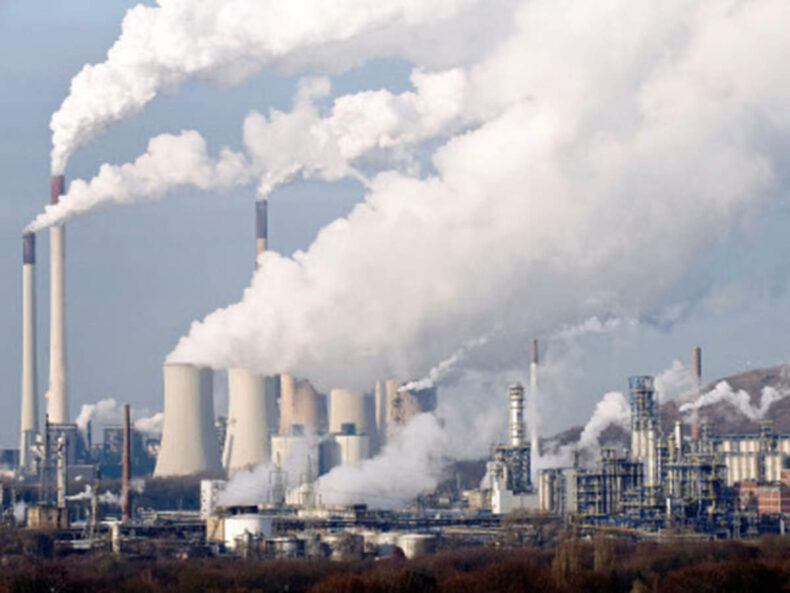Climate change and air quality which is directly affected by it are realities that cannot be addressed in isolation, as highlighted in a report by the World Meteorological Organization (WMO).

While the adverse effects of pollution due to high temperatures are often underestimated, the report brings attention to the symbiotic nature between climate change and air quality. The report cites examples from various regions, including the north-western United States, where heatwaves triggered devastating wildfires, and instances of heatwaves combined with desert dust intrusions leading to hazardous air quality in Europe, all of which occurred recently in 2022.
The report delves into Brazilian case studies that showcase the positive impact of parks and tree-covered areas within cities. These green spaces not only contribute to improved air quality but also play a role in absorbing carbon dioxide and lowering temperatures, offering significant benefits to urban populations.
Climate Change and Air Quality – The Overlooked Connection
The World Meteorological Organisation (WMO), an intergovernmental group focusing on atmospheric science, climatology, hydrology, and geophysics, issued a stern warning regarding the overlooked hazards of air pollution exacerbated by climate change. The latest edition of the annual Air Quality and Climate Bulletin underscores the intricate relationship between climate change and air quality alongside rising temperatures.
The report emphasizes that air quality and climate change are inextricably linked, a fact that often goes unrecognized. WMO Secretary-General Prof Petteri Taalas asserted that “heatwaves worsen air quality, with knock-on effects on human health, ecosystems, agriculture, and indeed our daily lives,” highlighting the urgent need for a holistic approach.
The report also underscores the close connection between heatwaves and wildfires, as smoke from these fires releases a potent mix of chemicals that not only impact air quality and human health but also harm ecosystems, vegetation, and crops. Moreover, it contributes to increased carbon emissions, exacerbating the greenhouse effect.
Crucially, the report reveals that substances responsible for climate change and air quality degradation often originate from the same sources. Any changes in one of these areas invariably affect the other. Last summer, hundreds of air quality monitoring sites exceeded the World Health Organisation’s ozone air quality guidelines due to high temperatures.
In Europe, the report notes the south-west-to-north-east movement of a heatwave that brought an unusually high amount of desert dust over the Mediterranean and Europe in August 2022. This coincidence of high temperatures and elevated aerosol levels had a detrimental impact on human health and well-being.
The report also discusses the adverse effects of surface-level ozone, harmful to human health and crop yield, with globally averaged ozone-induced crop losses ranging from 4.4% to 12.4% for staple food crops. Wheat and soybean losses were particularly significant in key agricultural areas of India and China.
Record-breaking Heat and Ongoing Climate Impact
Meanwhile, the Copernicus Climate Change Service (C3S), the EU’s climate monitoring body, revealed alarming statistics for 2024. The period from June to August marked the warmest summer on record globally, with an average temperature of 16.77°C, surpassing the average by 0.66°C.
The European-average temperature for the summer of 2024 was 19.63°C, exceeding the average by 0.83°C. The summer also witnessed marine heatwaves affecting various regions around Europe.
C3S Deputy Director Samantha Burgess reported that August 2024, in particular, ranked as the warmest on record. Global temperature records continue to be broken, with each month setting new records. The global ocean experienced record-breaking warmth in August, further highlighting the severity of the situation.
The overarching message is clear: climate records are consistently getting shattered in 2024, with more extreme weather events and climate impacts looming on the horizon. To mitigate these challenges, a concerted effort to reduce greenhouse gas emissions is imperative and no longer an option.
The Interconnected Battle: Climate Change and Air Quality
In conclusion, the reports from both the World Meteorological Organization and the Copernicus Climate Change Service emphasize the connection between climate change and air quality. As climate breakdown accelerates, these issues are inseparable and must be addressed in tandem.
As the world grapples with the escalating climate crisis, these reports serve as crucial reminders of the need for holistic approaches to environmental challenges. Understanding the intricate connections between climate change and air quality is the first step towards mitigating their combined impact on human health, ecosystems, and the well-being of future generations.












